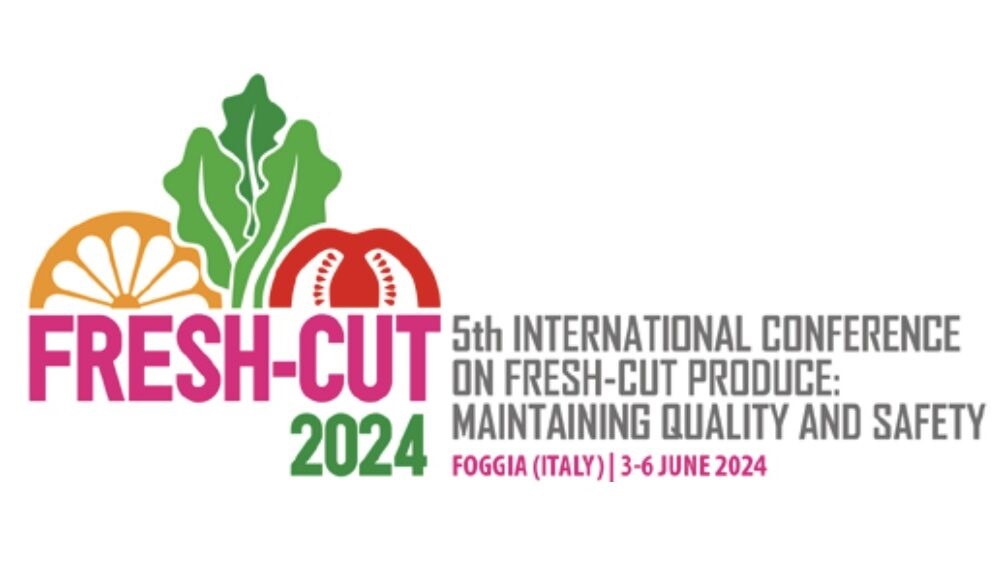Processing
Optimizing the Quality of Fresh-cut Produce through LED Light Application
Studies demonstrate how LED lighting enhances the quality and preservation of minimally processed fruits and vegetables. By Noelia Castillejo Montoya, researcher at Universidad Politécnica de Cartagena, Spain and the Università di Foggia, Italy (noelia.castillejomontoya@unifg.it)

Lighting is one of the primary sources of energy during plant development, playing a crucial role in the process by which plants produce their food.
Photosynthetically Active Radiation (PAR) between 400 and 700 nanometers is the spectrum range that photosynthetic organisms can utilize in the photosynthesis process. Chlorophyll, the green pigment present in leaves and other green parts of the plant, absorbs visible light, mainly in the red and blue regions, leading to the study of these lights. Recently, it has been demonstrated that lights of different wavelengths (blue, green, yellow, orange, red, or far-red) affect the biosynthesis of health-beneficial compounds during the post-harvest phase of fruits and vegetables (whole or pre-packaged).
LED lights represent a valid alternative to the use of conventional lamps due to their energy efficiency, durability, and versatility. Moreover, efficient management that reduces economic and energy waste in the food industries is part of the Sustainable Development Goals adopted by the United Nations. The history of LED lights in horticulture dates back to their first application in greenhouses. From the outset, these lights have been at the forefront of transforming the cultivation of fruits and vegetables, providing precise control over light conditions. Their ability to modulate quality during storage and transportation represents a significant advancement in the food industry.
How do LED lights affect the storage of fruits and vegetables?
Fruits and vegetables have specific sensors, called photoreceptors, that detect light and, depending on its wavelength, influence various physiological processes. The wavelengths of LED light can modulate the synthesis of biochemical compounds and enzymatic activity, thus impacting the ripening, metabolism, and overall quality of these products.
LED lighting induces abiotic stress in the plant, prompting it to produce secondary metabolites as part of its defense mechanism. Paradoxically, these bioactive compounds turn out to be beneficial for our health.
Benefits of LED Lights in the Storage of Horticultural Products
After harvest, fruits and vegetables undergo a rapid decline in quality due to increased respiration rate, softening, lipid oxidation, and water loss, resulting in a reduction of visual, organoleptic, and nutritional characteristics.
Given that this senescence process is intensified in fresh-cut or minimally processed products, LED lighting can be an effective postharvest treatment to extend the shelf life and maintain the quality of fruits and vegetables. The main benefits of LED lights in the post-harvest of these products are:
- Color Improvement: Color is a crucial attribute for the acceptance and quality of horticultural products, associated with the concentration of compounds such as anthocyanins, lycopene, and chlorophyll. Increasing these compounds enhances the visual appearance. For example, in the case of broccoli, white light illumination delays yellowing by maintaining carotenoid content.
- Delay or Acceleration of Ripening: Exposing certain fruits and vegetables to specific wavelengths of LED lights can delay or accelerate ripening. For instance, blue light delays the ripening of immature green tomatoes, while red light accelerates it. In the case of citrus fruits, blue light accelerates ripening.
- Increased Nutrients: Activation of the plant's secondary metabolism increases the content of beneficial compounds such as vitamins, sugars, polyphenols, and antioxidants, thus improving the nutritional quality of the products.
- Microorganism Control: Some wavelengths of LED light possess antimicrobial properties, contributing to controlling the growth of fungi and bacteria responsible for the deterioration of fruits and vegetables.
- Reduction of Food Losses: By maintaining the freshness of horticultural products for longer periods, economic losses are reduced, and food waste is minimized.
However, it is important to note that, although LED lights do not generate heat, a slight increase in weight loss has been observed in fruits stored under LED illumination compared to those kept in darkness. This is especially attributed to blue light, which affects stomatal opening, causing an increase in respiration rate and, in turn, affecting the overall metabolism of fruits and vegetables.
In what situations can LED lighting be implemented during the post-harvest storage of fruits and vegetables?
Typically, these products have been stored in darkness, whether in industrial cold storage rooms, supermarkets, refrigerated transportation, or even household refrigerators (with brief intervals of lighting when opening the door). However, on supermarket counters, products are exposed to extended periods of constant light, which could result in a decrease in quality if not managed properly.
Several scientific studies have explored different photoperiods during the storage of red pepper and broccoli, providing valuable information on how the duration and type of lighting can impact the preservation and quality of these products. Among these studies, it is worth mentioning those carried out at the Universidad Politécnica de Cartagena, Spain:
- Artés-Hernández, F., Castillejo, N., Martínez-Zamora, L. 2022. UV and Visible Spectrum LED Lighting as Abiotic Elicitors of Bioactive Compounds in Sprouts, Microgreens, and Baby Leaves—A Comprehensive Review including Their Mode of Action. Foods. 11(3):265. https://doi.org/10.3390/foods11030265
- Castillejo, N., Martínez-Zamora, L., Artés–Hernández, F. 2023. A photoperiod including visible spectrum LEDs increased sulforaphane in fresh-cut broccoli. Postharvest Biology and Technology, 200, 112337. https://doi.org/10.1016/j.postharvbio.2023.112337
- Martínez-Zamora, L., Castillejo, N., Artés–Hernández, F. 2023. Effect of postharvest visible spectrum LED lighting on quality and bioactive compounds of tomatoes during shelf life. LWT, 114420. https://doi.org/10.1016/j.lwt.2022.114420
This crucial topic will be thoroughly discussed in a session during FRESH-CUT 2024, the 5th International Conference on Fresh-Cut Produce: Maintaining Quality and Safety, which will take place in Foggia, Italy, from June 3 to June 6, 2024.














